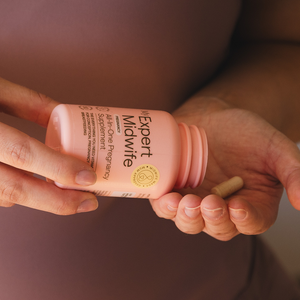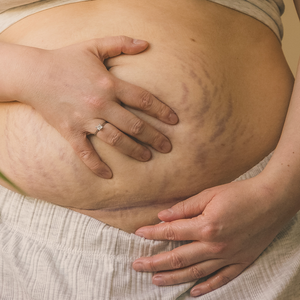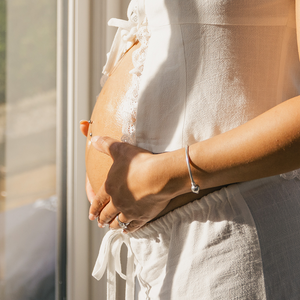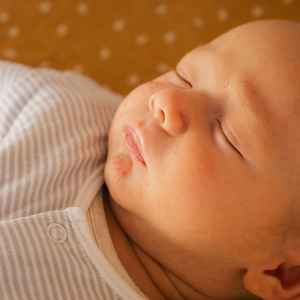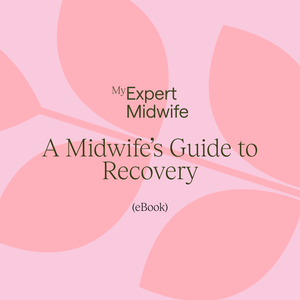Using ovulation test strips can help to improve your chances of becoming pregnant by informing you of when you are most fertile. They are easy to use and can be relatively inexpensive, which make them a valuable tool when you are trying to conceive (TTC).
Read on to find out exactly how they work, how to use them to predict your fertility, the best tips for improving their accuracy, and the pros and cons of using ovulation tests.
How do ovulation tests work?
Ovulation test strips, or ovulation predictor kits (OPK), are basically at-home urine tests that work by detecting when the levels of a hormone called luteinising hormone (LH) are over a certain threshold.
A surge of LH in your system triggers the release of an egg from one of your ovaries (ovulation). This means that, when LH is found in higher levels in your urine, you are close to ovulation and, therefore, potentially on the most fertile days of your cycle.
How do you use ovulation strips to predict fertility?
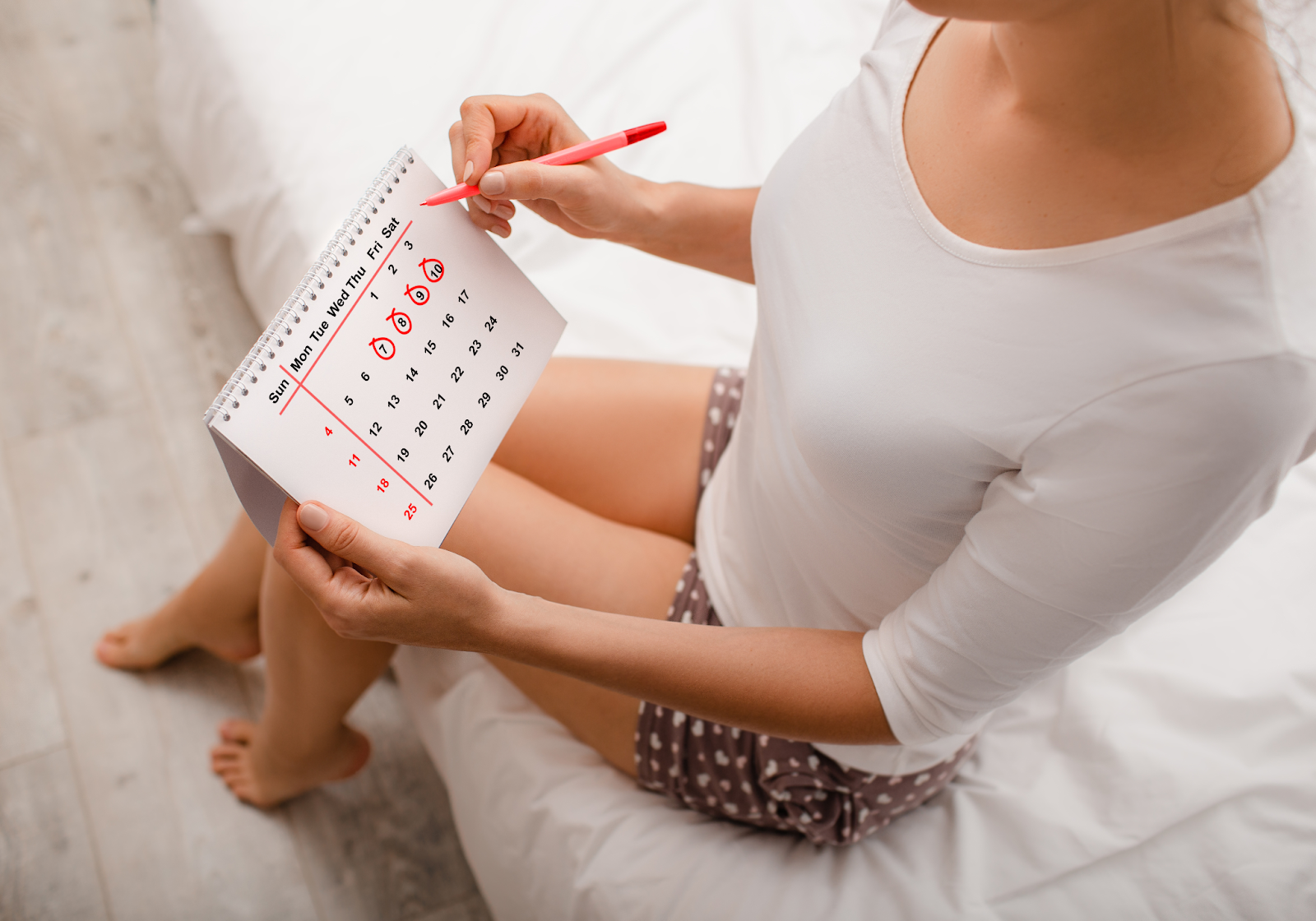
Your most fertile days, known as your ‘fertile window’, are the days prior to and including ovulation, when you may notice that your cervical mucus has become more copious and similar to egg-white and you are feeling more sexual.
LH surges 24-36 hours before ovulation occurs and this surge is what an ovulation strip checks for to predict fertility. When the levels of LH in your urine are over a certain threshold, the ovulation stick will give you a positive result, meaning that you are nearing ovulation and are therefore potentially fertile.
Your personal situation or needs may mean that you are unable to, or do not desire to, have sex with your partner every 2-3 days (this can significantly increase your chances of conceiving), so using ovulation tests or OPKs can help you to time when to have sex with your partner.
What does a positive ovulation test result look like?
In order to get a positive result on an ovulation test, it needs to detect the LH surge. How this looks like will depend on the type of ovulation test you are using.
If you have chosen a digital ovulation test, you are likely to get a display that shows a smiley face or the word ‘Yes’ when it is positive. Whereas, if you are using the paper strips or ‘wands’, you will need to look out for the presence of two lines and the colour of the test line.
When using these tests, the control line, or reference window, needs to go dark to show that the test is working - no control line means the test is invalid (usually because it is not wet enough). The test line, or result window, will likely appear faint throughout most of your cycle (as there are lower levels of LH), but a positive test result will happen when the test line becomes as dark or darker than the control line.
What time of day should I take an ovulation test?
Studies have shown that the best time to do an ovulation test is early to mid-afternoon - with the optimum time being between 2pm and 2.30pm. In most women, this is the time of day when LH is at its highest levels.
LH levels tend to be low first thing in the morning, meaning that if you tested at this time, you could miss a surge in LH.
How long after a positive ovulation test are you fertile?
When you start testing a few days before you get a definite positive ovulation test result, the latter will indicate that ovulation is likely to occur in the following 24-36 hours. This means that you would be fertile for the following 1-3 days. Therefore, if you haven’t already, this is the time to start having sex.
If you have not been testing daily and you get a positive test result - i.e. you only test once or several days have passed between a negative and a positive result - it could mean that you have missed that initial LH surge and, even, that you have already ovulated. Seeing as the LH surge can last up to 3 days, a positive result obtained without previous days of negative/faint results may therefore mean that you are not fertile for as long following the result.
How accurate are ovulation test strips?
When used correctly, ovulation test strips are about 97-99% accurate in detecting a surge in LH, which is almost always followed by ovulation.
Things to look out for:
- If you only test your urine once or twice when you think you are approaching ovulation, you may miss your fertile window
- If you are over 40, results may not be as accurate, as you may be ovulating earlier each month
- If you are approaching menopause, your LH levels may be consistently higher and this can lead to false positive results
- Polycystic ovary syndrome (PCOS) can result in several LH surges per cycle, which can lead to confusion when using ovulation tests, as only one of these surges would be followed by ovulation
- If your periods are very irregular, it can be harder to know when to use ovulation tests
- Some rare disorders such as LUFS (luteinised unruptured follicle syndrome) can lead to positive result on the test stick but this is not followed by an egg being released
Improving the accuracy of ovulation test strips

You can help improve the accuracy of ovulation tests and increase your chances of getting pregnant by:
- Charting your menstrual cycle and monitoring your basal body temperature (BBT) and cervical mucus. This will give you a wealth of information and help you better determine when you are ovulating.
- Starting to use the ovulation test strips about 4-5 days before you think ovulation is most likely to occur, so you don’t miss that short window of opportunity
- Testing between 2pm and 2.30pm or, if this is not possible, at the same time every day, avoiding first thing in the morning
- Restricting your fluid intake for about 2 hours before doing the test, as an LH surge may not be detected if the urine is too dilute
- Making sure the strip has absorbed enough urine and the control line/reference window is visible
- Ensuring there isn’t too much urine in the receptacle you use and being careful not to dip the ovulation test strip beyond the max line as this is likely to invalidate the results
- Charting for at least 2-3 months before you start using ovulation strips if you have very irregular cycles, as these can make it harder to predict when you may be ovulating
- Reading the instructions carefully, as these may differ between brands and kits
- Ensuring the tests are in date and have been stored correctly, as per manufacturer’s directions
Are there any downsides to using ovulation test strips?
When using ovulation strips you may want to consider:
- Cost. There’s a wide range of prices for ovulation test strips and OPKs, and fancier kits are not necessarily more accurate, so do shop around.
- OPKs do not monitor the quality of your cervical mucus. So, even if you are ovulating and using the test strips correctly, if you are not producing ‘sperm friendly’ cervical mucus, your partner’s sperm may not be able to reach you egg
- Some fertility drugs can raise your LH levels, rendering ovulation tests ineffective
Increase your chances of getting pregnant with our Trying to Conceive Kit
Ovulation test strips and ovulation predictor kits are a great tool that can help increase your chances of getting pregnant. At My Expert Midwife we have created a non-for-profit fertility kit that includes 12 ovulation test strips, an easy-to-follow midwife written comprehensive guide to trying to conceive, a thermometer, pregnancy test strips and an ovulation chart to help you stay on track throughout your menstrual cycle. The contents of our Trying to Conceive kit will support you for approximately 3 months.
